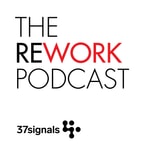BackTable Vascular & Interventional – Détails, épisodes et analyse
Détails du podcast
Informations techniques et générales issues du flux RSS du podcast.

BackTable Vascular & Interventional
BackTable
Fréquence : 1 épisode/5j. Total Éps: 572

Classements récents
Dernières positions dans les classements Apple Podcasts et Spotify.
Apple Podcasts
🇨🇦 Canada - medicine
28/07/2025#96🇬🇧 Grande Bretagne - medicine
21/07/2025#97🇨🇦 Canada - medicine
19/07/2025#75🇬🇧 Grande Bretagne - medicine
14/07/2025#85🇨🇦 Canada - medicine
09/07/2025#59🇺🇸 États-Unis - medicine
01/02/2025#94🇫🇷 France - medicine
26/01/2025#85🇫🇷 France - medicine
25/01/2025#66🇨🇦 Canada - medicine
10/12/2024#92🇨🇦 Canada - medicine
06/12/2024#97
Spotify
Aucun classement récent disponible
Liens partagés entre épisodes et podcasts
Liens présents dans les descriptions d'épisodes et autres podcasts les utilisant également.
See all- https://www.whitecoatinvestor.com
1414 partages
- https://www.thetrevorproject.org/
829 partages
Qualité et score du flux RSS
Évaluation technique de la qualité et de la structure du flux RSS.
See allScore global : 53%
Historique des publications
Répartition mensuelle des publications d'épisodes au fil des années.
Ep. 477 Building a Successful Lymphangiography Practice with Dr. Bill Majdalany
mardi 3 septembre 2024 • Durée 54:25
Ep. 476 Medical Innovations: IR in Space with Dominic Tanzillo and Dr. Richard Moon
mardi 27 août 2024 • Durée 37:06
Ep. 467 Independent IR Practice in Rural America with Dr. Frederick D. Johnson
vendredi 26 juillet 2024 • Durée 49:15
Ep. 377 Management of HCC: Focus on Radiation Segmentectomy Part 1 with Dr. Juan Gimenez and Dr. Tyler Sandow
lundi 23 octobre 2023 • Durée 24:03
Ep. 376 New Frontiers in Spinal Tumor Ablation and Augmentation with Dr. Dana Dunleavy
mercredi 18 octobre 2023 • Durée 01:01:52
Ep. 375 How to Get Independent IR Hospital Privileges with Dr. Bill Julien
lundi 16 octobre 2023 • Durée 42:52
Ep. 374 Independent IR: More Than Locums, It's a Calling with Dr. Ian Wilson and Dr. Kavi Devulapalli
vendredi 13 octobre 2023 • Durée 55:34
Ep. 373 Sharp Recanalization Using the RF Wire with Dr. Marcelo Guimaraes
lundi 9 octobre 2023 • Durée 54:23
Ep. 372 IR Pathways Unveiled: Matching, Training, and Beyond with Dr. Neil Jain
vendredi 6 octobre 2023 • Durée 59:54
Ep. 371 Transverse Sinus Stenting for Idiopathic Intracranial Hypertension with Dr. Aaron Bress
lundi 2 octobre 2023 • Durée 31:09









